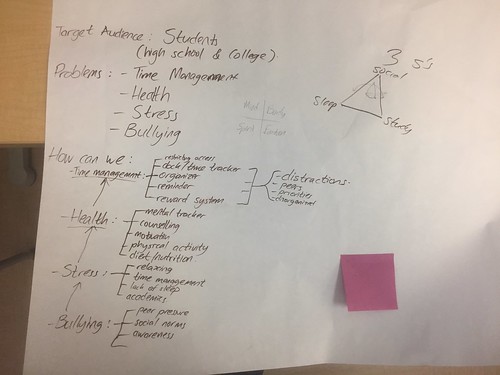We had studied how to use Cura and Autodesk Fusion360 in the past several weeks. We explored the functionalities of these two software and printed the words designed by other users from the third-party. It was interesting and exciting to see the design being printed by the 3D printer layer by layer, while we still needed to move forward and started to develop our own designs.
The authors of the article from Science magazine argue that creativity is more efficient when there is a structure laid out or a framework to follow. More specifically, the structure is clearly defined and may have constraints imposed. Professor Vishal gave us a “How can we…” or “How may we…” question structure. These question structures provided us a form of discovering an ignored user demand, improving an already existing product, or changing the status quo. By keeping asking ourselves these similar questions, we could inspire each other and find great ideas as a part of the semester project. Many group came up with excellent HCW statements:
- How can we get busy individuals who are working or in college to drink more water?
- How can we create a laptop case which can fit all laptops and keep them from breaking?
- How can we get households around the world to save energy?
- How can we get bikers in college to wear helmets and keep their bikes safe?
- How can we get people in working areas such as college or the workplace to keep their whiteboards clean?
From Bakliwa
- How can we conserve water when doing dishes and washing our hands?
- How can we make smart home products less expensive?
- How can we stop hot air from escaping through window cracks?
From Jorge Castro
Once these statements had been listed, we began to rely on our innovations to find ways to solve these problems. But, how could we solve the problems effectively and creatively? Michael Carroll, a researcher at Fast Company magazine, used to work with C-level leaders who have difficulty to support their ideas as an executive coach. Based on his experience, Michael found that the people who can successfully bring new ideas to maneuver have a common characteristic, empathy. It is important to resonate or experience others as if from within their own skin so that agents could have a broad perspective about the whole issue. Most of us chose the college students as our target customers. Following the empathy methodology, we began self-reflecting about what we needed most while the current service or objects could not satisfy us. Many students generated interesting ideas such as:
1.How can we save water when cleaning dishes?
First problem we identified is that too much water was wasted when we wash dishes by hands. A considerable amount of water was not utilized effectively when we rinse the dishes. As we all agreed, our concern in this issue is to save resource and energy instead of water bill.
When we moved forward to think about possible solutions, we were inspired by a product design on kickstarter.com, which pulverizes water stream. Our team thinks we could build on that idea and design a product that works with different types of home-use or commercial faucets. We will be continue working on brainstorming solutions in the following meetings.
From Xinlu
2. Fitbit wristband attachment – solves issue of dehydration
Universal laptop case – solves the issue of lack of non-Apple laptop cases
From Ana
3.Comprehensive: HCW & Solution
From Taofik
As emphasized by the David Kelly, the CEO of a global firm IDEO, he highly values the benefits brought by empathetic design or user-centric. Empathetic design requires the designers to think about the feeling of the client he/she is making the product for. This design methodology brought unparalleled competitive advantage for the IDEO. All in all, the HCW structure helps us to focus on improvement process and empathy reminds us the significance of user-centric. It is amazing to see that all of us can generate so many great ideas within 20 minutes timeframe. Moreover, these ideas will become part of our final design and the will be printed at the end of this semester.










